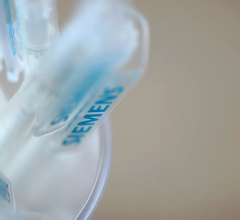
December 16, 2015 — Patients with in-hospital cardiac arrest (IHCA) have low survival rates—but why do some hospitals achieve higher survival than others? Higher nurse staffing levels and better working conditions may be part of the answer, reports a study in the January issue of Medical Care. The journal is published by Wolters Kluwer.
"These results add to a large body of literature suggesting that outcomes are better when nurses have a more reasonable workload and work in good hospital work environments," according to the new research study, led by the University of Pennsylvania School of Nursing's Matthew McHugh, Ph.D., JD, MPH, RN, associate director, Center for Health Outcomes and Policy Research. "Improving nurse working conditions holds promise for improving survival following IHCA."
Despite the chance of early intervention, less than one-fourth of patients with IHCA are discharged from the hospital alive. Some hospitals have been much more successful than others at improving survival after IHCA. Because nurses are the first link in the "Chain of Survival" in IHCA, factors related to nurse staffing might help to explain these variations.
McHugh and colleagues analyzed 2005-07 data on more than 11,000 adults with IHCA at 75 hospitals in four states, drawn from the American Heart Association's "Get With The Guidelines-Resuscitation" database. Data from national surveys of hospital characteristics and nurse staffing were used to analyze how these factors affected hospital survival rates after IHCA.
Only 15 percent of the patients with IHCA survived to hospital discharge. Most of the IHCAs occurred in an intensive care unit (ICU), and 80 percent were witnessed. Eighty-eight percent of patients were on cardiac monitoring equipment when their cardiac arrest occurred.
Several factors affected the chances of survival—including whether the patient had a "shockable" heart rhythm that can potentially be reversed by an electric shock. Patients who were being monitored were also more likely to survive.
But even after taking these and other factors into account, hospitals with higher nurse staffing levels had higher IHCA survival rates. On general medical-surgical units, each additional patient per nurse was associated with a 5 percent relative reduction in the odds of survival.
In addition, the likelihood of survival was 16 percent lower at hospitals with poor work environments. That classification was based on a survey evaluating key areas for professional nursing practice, such as nurse participation, leadership and support.
Nurse staffing levels in ICUs did not significantly affect the chances of survival after IHCA. That likely reflected limited variation in ICU staffing levels due to increasing standardization.
By comparison, staffing on general medical-survival units varies considerably between hospitals. McHugh and coauthors noted, "Nearly half of IHCAs occur on medical-surgical units, which also have the most variable staffing levels and the most problematic work environments." The authors suspect that having too many patients to manage interferes with nurses' ability to effectively monitor patients closely, identify changes in patient condition, and intervene with lifesaving efforts quickly when seconds count.
The results add to a growing body of evidence that improving hospital work environments may be a promising approach to reducing preventable deaths—particularly after IHCA. "Adequate hospital nurse staffing may be an important strategy in efforts aimed at achieving excellent patient outcomes," the researchers wrote. But improving staffing may be difficult for some hospitals because of costs—nurses already account for more than 40 percent of direct care costs for hospitalized patients.
McHugh and colleagues believe that simply adding more nurses without considering the work environment may be a poor investment. They wrote, "Improvement of work environments...requires a change of inter-professional culture and extended delegation of care management to those care providers who are closest to patients."
For more information: www.journals.lww.com/lww-medicalcare


 November 14, 2025
November 14, 2025 









